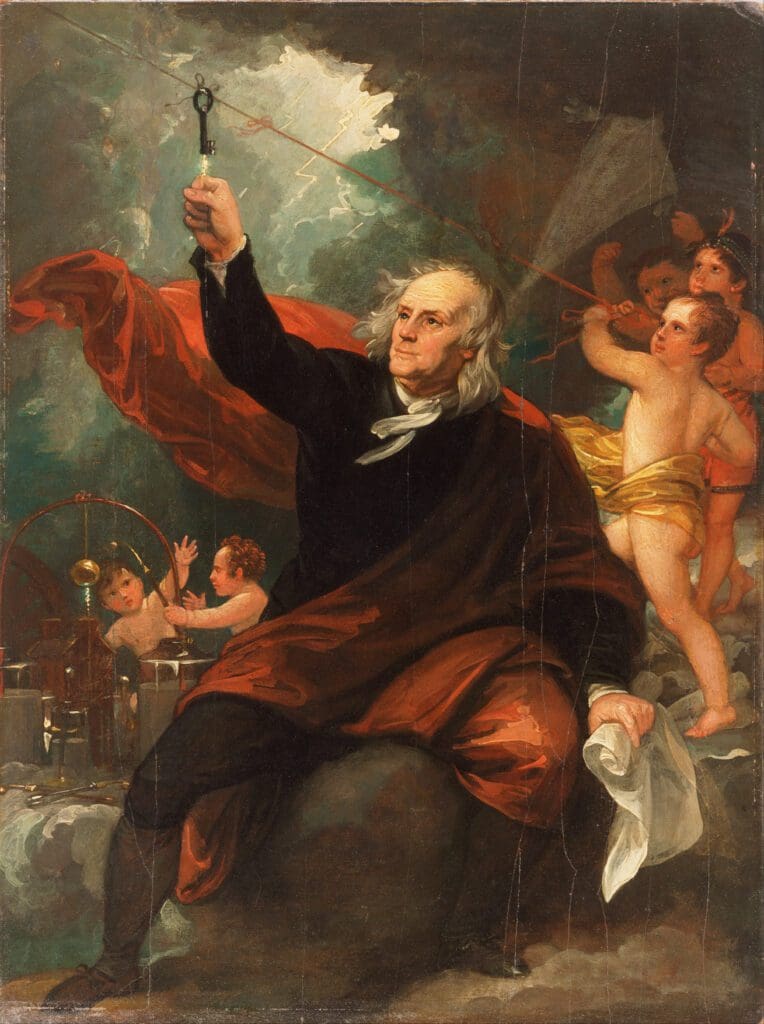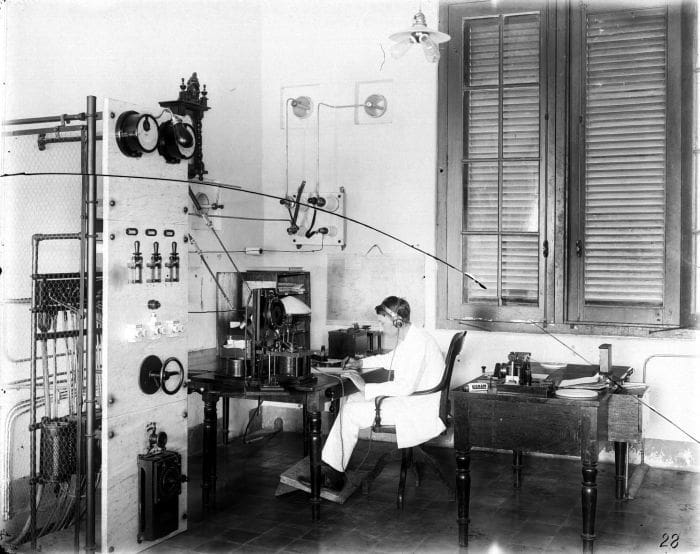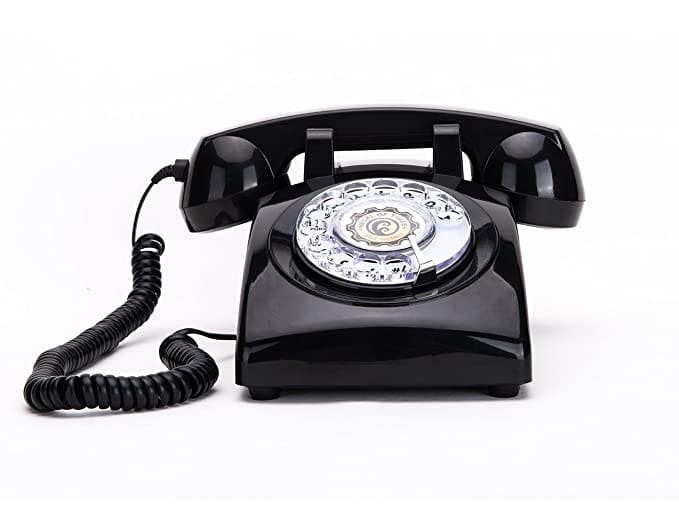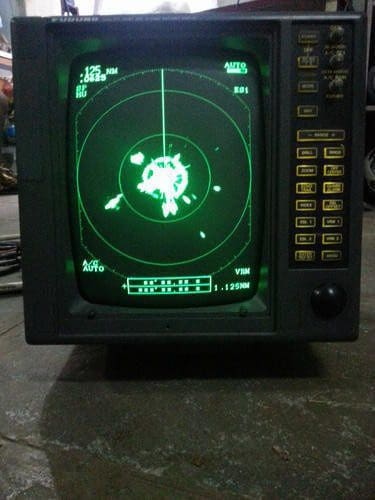The discovery of electromagnetic energy"Energy" is a fundamental concept in physics, often described as the ability to do work or cause change. In everyday terms, it's what is needed to move things, heat them... was one of the pivotal moments in human history. Its potential was unmatched, and it catapulted humans into the future like no invention before. It sparked an era of progress and innovation, forever changing how we live and interact with the world.
But like many things, EMF has a downside. And after a few decades of using EMF-powered products, people started to notice this. But by then, it had already become an enormous business. And the science demonstrating its bad side was suppressed, discredited, and hidden.
If you’re reading this post and new to the concept of The Business of EMF Science, I highly recommend first going through the rest of the posts in this series. You can use the button below to start reading.
This post will highlight the most important events in EMF science and shed light on those research studies that didn’t make it past the university doors.
So, let’s begin.
The 1700s: Invention of Electricity
The year is 1752, and the world is still shrouded in darkness, longing for a brighter future. A curious soul named Benjamin Franklin, driven by the thirst for knowledge, sets out on a daring experiment.

Want to Slash Your EMF Health Risks?
Want to Slash Your EMF Health Risks?
Good! Learn the one small change you should make right now.
He ventures out on a stormy night with his trusted kite in hand. Lightning crackles from the sky, and Franklin launches his kite with a metallic key dangling from the silk string.
Lightning crackles again, and then, nothing short of a miracle happens.
His theory was that if lightning struck the kite, the charge would be conducted down the string, and the key would collect the charge. And that is what happened. The charge flowed through the string and gave Franklin a mild shock when he touched the key, proving lightning’s electrical nature.
The news of this groundbreaking experiment spread rather quickly, electrifying the minds of inventors and scientists worldwide.
Following this, Italian physicist Alessandro Volta created the world’s first practical electric battery, known as the Voltaic Pile.
Eighty years later, an English scientist named Michael FaradayMichael Faraday: Pioneer of Electromagnetism and the Faraday Cage Michael Faraday, born on September 22, 1791, in Newington Butts, Surrey, England, was a brilliant scientist and experimentalist who made groundbreaking... performed a pivotal experiment that proved extremely valuable to the human race. He discovered electromagnetic induction—a phenomenon that occurs when a magnetic fieldIn the context of electromagnetic fields (EMF), the term "field" refers to a region in space where electric and magnetic forces are exerted. An electromagnetic field is generated by electrically... interacts with a conductorThe term "conductor," in the context of electromagnetic radiation, refers to materials or substances that allow for the efficient passage of electromagnetic energy, including both electric currents and electromagnetic fields...., generating an electric current.
This laid the foundation for the development of electric generators and transformers, ushering in a new era of electrical power"Power" in a scientific context refers to the rate at which work is done or energy is transferred. In simpler terms, it's how fast something is using energy. For example,....
Soon after, Thomas Edison was awarded a patent for inventing the first working light bulb.
The light bulb worked using DC or direct current"Direct Current" (DC) is a type of electrical current where the electric charge flows consistently in one direction. It's like water flowing steadily in a straight line through a hose..... Then came Nikola TeslaNikola Tesla: The Genius Who Electrified the World Nikola Tesla, often referred to as the "Wizard of Electricity" and the "Father of the Modern World," was one of the most..., who introduced the world to AC or alternating currentFundamentals of Alternating Current Alternating current (AC) is a type of electrical current in which the flow of electric charge periodically reverses direction. In contrast to direct current (DC) where....
So, these brilliant minds working for centuries gave us the electricity we can’t live without today.
1837: Telegraphs Became Commercial
In the midst of improving the concept of electricity, people invented a few more things. Telegraph machines were one of them.
This invention revolutionized long-distance communication. And it relied on transmitting electrical signals over long distances using a series of interconnected telegraph stations.
1870: Telegraph Operators Report EHS Symptoms
Telegraphs were complex machines. So, they required operators. By 1870, these machines were being used everywhere, and that’s when a concerning phenomenon began to emerge.
Many telegraph operators started reporting unusual symptoms like fatigue, headaches, dizziness, sleep disturbances, irritability, and even skin rashes. The longer they spent near the electromagnetic fields generated by the telegraph equipment, the worse these symptoms seemed to get.
This phenomenon is called EHS or electromagnetic hypersensitivity, in which an individual develops allergy-like symptoms when close to EMF sources.
Learn more about it in my post, “What is Electromagnetic Hypersensitivity?”
1881: “Electro-Susceptibility” and “Electro-Sensibility” Recognized
Even though people were complaining of EHS-like symptoms, it wasn’t until 1881 that EHS was recognized in a written text. Neurologist George Miller Beard and Physicist Alphonso Rockwell first discussed the concept of “electro-susceptibility” and “electro-sensibility” in their book On the Medical and Surgical Uses of Electricity.
1886: First Artificial Radio Waves
Cut to 1886, a young physicist named Heinrich HertzThe term "hertz" (Hz) is a unit of frequency in the International System of Units (SI), used to measure the number of cycles per second of a periodic phenomenon. It... produced the world’s first artificial radio waves. This would later go on to support a technology so advanced that it connects two people in different parts of the world, brings information to people’s fingertips, and gives globalization a whole new meaning.
But at first, the uses of Hertz’s discovery were limited to scientific experiments and demonstrations. People hadn’t gone wireless yet. But, the usage of electrical signals to facilitate long-distance communications (though through wires and cables) was coming into fashion.
Three years later, in 1889, The British Medical Journal published “The Telephone as A Cause Of Ear Troubles,” an article highlighting reports from frequent telephone users suffering from buzzing noises in the ear, nervous excitability, giddiness, and neuralgic pains.
While this was happening, people were also working on finding real-life applications for scientific breakthroughs like radio waves. And nearly three decades later, they had built something they could use to communicate wirelessly, which proved extremely valuable during World War I.
1914-1918: World War & Wireless Communication
1914, the beginning of World War I. Countries worldwide were trying to one-up one another, and those with wireless technology came up with a significant advantage.
Wireless telegraphy allowed for better military communication over long distances, and since it didn’t need any physical wires or cables, the enemy didn’t hold an advantage. This was particularly valuable, as rapid and secure communication was crucial for coordinating troops, relaying commands, and gathering intelligence.
Besides telegraphs, telephones also gained popularity among the public during that time. However, the majority of telephone systems relied on wired connections rather than wireless technology. And just like the telegraph systems, telephones at that time required operators that had to sit beside the phone all day.
1915: Sick Telephone Operators
In 1915, Karl Schilling published a book entitled Die Krankheit der Telephonistinnen und ihre Verhütung or The Sickness of Telephone Operators and its Prevention.
In this book, Schilling describes the sickness experienced by telephone operators and ways to prevent it. Besides focusing on points like continuous conversation, noise exposure, and the need for constant attention, he also described a side effect of being a telephone operator, known as “telephonistinnen.”
He mentioned that the electrical signals from telephones could potentially contribute to health problems among operators. He stressed that electrical currents and signals transmitted through the telephone lines could impact the operator physically.
1930: Ultra Short Waves
In 1926, a US Public Health Service surgeon shared a very troubling study: mice exposed to ultra-shortwave EMF (electromagnetic fields) suffered severe physiological effects and, in some cases, even death. Before this, people thought that only extremely high-frequency EMFs that can heat your internal tissues could damage one’s physiological being.
But no, that wasn’t the case.
And this was also when Radar, or Radio Detection and Ranging technology, was about to make its debut. And it worked completely on shortwave and ultra-shortwave technology.
Radar became popular, and guess what? Radar operators began to report unusual symptoms, like skin pain, disturbed sleep, headaches, and weakness.
1939-1945: World War 2 & Radar
Despite the reports of unusual symptoms, the popularity of Radar didn’t fade at all. In fact, it was one of the most crucial techs during World War 2.
Radar works by emitting radio waves and analyzing the reflections of those waves when they encounter objects in their path. It helped radar operators determine the incoming object’s distance, direction, and even speed.
This information was invaluable for the military as it acted as an early warning for people to watch out for enemy aircraft. Because of this, both Allied and Axis forces used Radar technology during World War 2. But the biological concerns weren’t brushed aside.
In fact, the Navy tasked Dr. Zory Glaser to find and create a list of research studies confirming the biological effects of EMF. More on that later.
1952: Schumann Resonance
In 1952, Winfried Otto Schumann revealed how an extremely weak electromagnetic field, operating at 7.83 Hz, surrounds the Earth. This frequency"Frequency" in the context of electricity, Electromagnetic Fields (EMF), and wireless communication, can be thought of as the number of times something happens in a second. Specifically, it refers to... later came to be known as the Schumann ResonanceThe Schumann Resonance is a set of spectrum peaks in the extremely low frequency (ELF) portion of the Earth's electromagnetic field spectrum. Discovered in 1952 by German physicist Winfried Otto....
This discovery proved invaluable in the fields of electromagnetic compatibility, ionospheric research, atmospheric and climate studies, and space weather monitoring.
Besides those, scientists also discovered that this weak electromagnetic field can benefit human health, proving that it’s not just extremely high-frequency EMFs that can affect human biology, but also weaker ones.
Now, whether the impact is good or bad depends on many variables, but one thing we can’t deny is that our biology interacts with EMF.
You can learn more about Schumann Resonance in my post, “Schumann Resonance: Why the Earth’s Heartbeat Is Essential for Your Wellbeing.”
1961: The Frey Effect
By now, hundreds of scientists are working to understand EMFs effects on human biology. One such scientist was Dr. Allan H Frey.
Dr. Frey introduced the world to the phenomenon called the Frey effect. He said that the brain of an EMF-sensitive individual could interpret microwaves as sounds. Even though no actual sound waves are present, if a microwave hits their heads around the temporal lobe, the brain can perceive it as sound.
He also noted that microwaves sometimes could induce a “pins-and-needles” sensation – exactly what EHS patients describe as part of their illness.
In 1963, Clarence Wieske also published an article about a woman who could “hear” electricity on the wiring in her home. Inspectors later discovered that her house had extremely high levels of stray electricity.
Stray electricity refers to undesired or unintended electrical currents that flow through unintended paths in your electrical systems. Typically, it occurs because of faulty wiring or improper grounding. It can lead to problems like electric shock hazards, electromagnetic interference, and disruption of electronic devices.
When the woman fixed the wiring problems, the “noise” went away.
1971: Dr. Zory Glaser
After a few decades of being tasked by the Navy to generate a list of scientific studies demonstrating the biological effects of radio-frequency and microwave radiationMicrowave radiation is a form of electromagnetic radiation with wavelengths ranging from one meter to one millimeter; with frequencies between 300 MHz (0.3 GHz) and 300 GHz. This type of..., Dr. Zory Glaser finally published his report in 1971.
The good thing is that he is still tracking such research studies, and now the report lives on his own website.
The science didn’t stop. Dr. Allan FreyDr. Allan H. Frey, born on March 18, 1935, is a distinguished scientist known for his pioneering work in the field of electromagnetic fields (EMF) and the discovery of the... also continued his research. In 1975, he revealed that microwaves weaken the protective blood-brain barrier, causing problems like albumin leakage in the brain.
I’ve covered this in-depth in my post, “EMF & Brain Health.” So, give it a read.
When Frey showed his research to the public, he received a letter from the U.S. Office of Naval Research informing him that publishing more results could cost him his funding. This is because Frey’s research showed that Radar was unsafe, and the military couldn’t have that.
1977: Dirty Electricity
Five years later, we have another breakthrough in the field of EMF science. With the second generation of Apple computers, the switch-mode power supply entered the mass market. And we found that impeding the continuous flow of electricity creates something called dirty electricity, which is terrible for our health.
1979: EMF & Cancer
The year 1979 marked an important milestone in the field of EMF science. This year, Nancy Wertheimer and Ed Leeper published a groundbreaking study examining the possible link between power-line EMFs and an increased risk of childhood leukemia.
It prompted further exploration into the potential effects of electromagnetic radiationElectromagnetic radiation refers to the waves of the electromagnetic field, propagating through space, carrying electromagnetic radiant energy. It includes a wide range of electromagnetic waves, from very long radio waves... on human health. And it’s one of the reasons we have so many research studies today demonstrating the biological effects of EMF.
1984: The Very First Mobile Phone
Till 1984, people were still using telephones, or as the kids say, “that thing with a tail.” But not anymore, as this year, the world was introduced to its very first portable (well, not so much — it weighed around 2 pounds) mobile phone.
The phone was DynaTAC 8000X from Motorola, and it cost $3995 (around $11,833.51 in 2023 if we adjust for inflation). It was genuinely a major breakthrough in telecommunication history. But it was also the very beginning of common people being exposed to radiofrequency 24/7.
EMF Science Research Timeline Pt. 2 Preview
I know this is an abrupt ending to a post. And even I didn’t want to do that. But we still have a lot to cover in the history of EMF science, and this post is already very long. So, I had to break this post up into two.
Thank you for reading this and the previous posts in this series and supporting my efforts to bridge the gap between complex and hidden EMF science and the general population. I’ll meet you again with part 2 of the EMF Science Research Timeline soon.
Until then, be safe, and take care.













